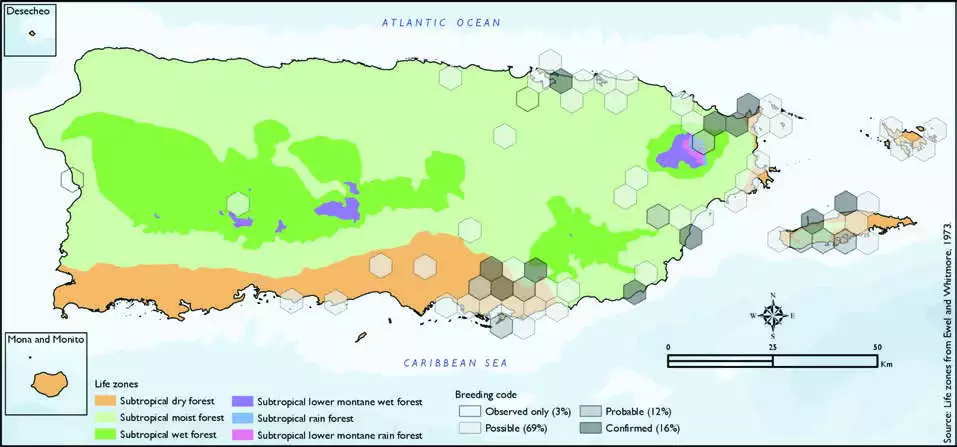Green-throated Carib
Description
The green-throated carib (Eulampis holosericeus) is a species of hummingbird in the genus Eulampis, which contains one other species. It has two subspecies, holosericeus and chlorolaemus, the former occurring in Puerto Rico and the latter in Grenada.
The green-throated carib is a large hummingbird. Adult females have some feathers orange to light green below the peak, while adult males have light green in greater proportion. Also the tail in adult females is dark red-brown with tips ending in white, the tail of the male is dark blue. Both females and males have an intense blue band on the chest, belly of both are dark green-blue. The back of both is green with golden tones.
Distribution & Habitat
The Green-throated Carib occurs throughout the Lesser Antilles,
the Virgin Islands, Vieques
(Gemmill 2015), and Puerto
Rico (Raffaele and others 1998),
where it is a common but local
resident (Oberle 2018). This
hummingbird is believed to have colonized from the Virgin Islands
and the Lesser Antilles, where
it is widespread and common
(Raffaele 1989a, Raffaele and
others 1998). Although Wetmore
found this species to be common
on Culebra, Culebrita, and
Vieques during his surveys in
19111912, he never observed
it on Puerto Rico and was
aware of only two prior records
from the main island (Wetmore
1916). However, by the 1980s
the Green-throated Carib was
found in eastern Puerto Rico
and believed to be expanding
its range westward on the island
(Raffaele 1989a). It is currently
common on the coastal plain
of the eastern third of Puerto Rico and on offshore cays
(J.A. Salguero-Faría, personal
observation 2009). The Green-
throated Carib inhabits forests,
mangroves, and gardens (Oberle
2018). The atlas fieldwork
yielded a total of 99 records
within 68 hexagons or 14
percent of the 479 total hexagons
(see map). Of the 68 hexagons
where this species was found,
breeding met the atlas definition
of confirmed in 16 percent (11)
of the hexagons, probable in 12
percent (8), and possible in 69
percent (47), while the species
was observed in 3 percent (2)
of the hexagons but without
evidence of breeding (see map). Green-throated Carib distribution. The map shows the highest breeding code by hexagon and overlaying the ecological life zones in
Puerto Rico. Note: percentages may not total 100 due to rounding. 85Green-throated Carib/Zumbador Pechiazul

Breeding Habits
Previously published reports indicate that the Green-throated
Carib breeds from March to mid-
July, and nests are built in the
fork of a twig above the ground
(Raffaele and others 1998). Atlas
results show that breeding occurs
in almost every month and
probably extends throughout
the year, but it is higher in May
and June (see chart). Results
show that this species mostly breeds within the subtropical
dry and subtropical moist forest
life zones (50 and 47 percent of
the hexagons, respectively), in
the coastal lowlands (see table and map).
Conservation
The Green-throated Carib population is described as
common within its distribution
range, and it is listed as a
species of least concern by the IUCN (BirdLife International
2016). Locally, this species is not
listed in any of the threatened
categories of PRDNER and
USFWS. In Puerto Rico, the
Green-throated Carib has a
protected habitat in land of 10
percent or 158 km2 of the total area covered by the hexagons
where evidence of breeding
was found for this species
(1622 km2).
Related Species
Family:
hummingbird